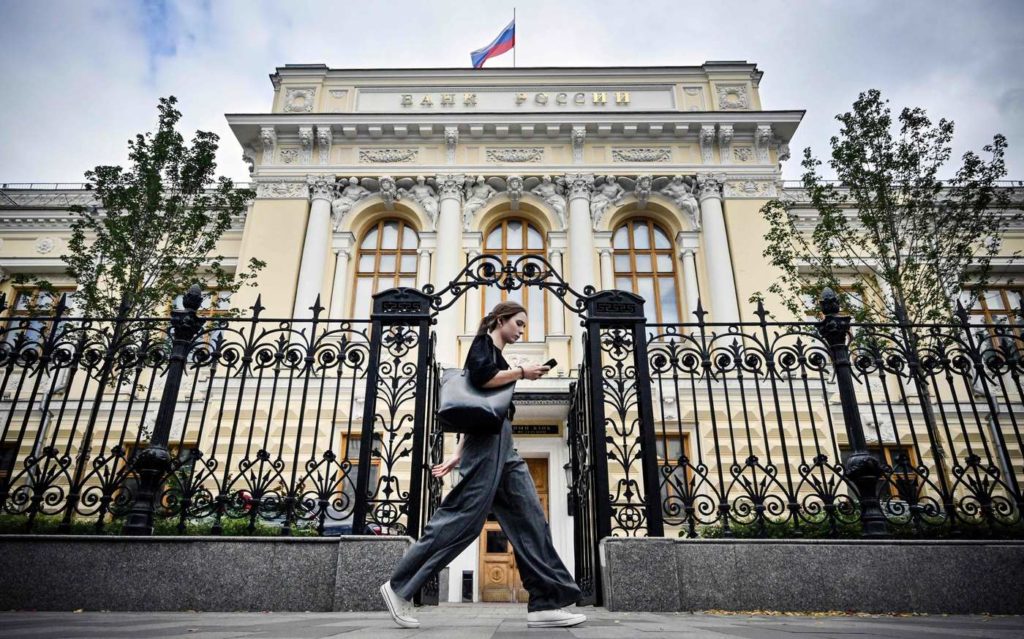Fortune: Putin’s military binge is bleeding the Russian economy dry

Russia’s wartime economy—once portrayed by the Kremlin as resilient in the face of Western sanctions—is now faltering, Fortune reports. A key minister warned the country is “on the brink” of recession amid labor shortages, inflation nearing 10%, and a steep downturn in industrial output, all fueled by years of massive war spending following Russia’s invasion of Ukraine.
At the St. Petersburg Economic Forum on 19 June, Russia’s economy minister Maksim Reshetnikov publicly acknowledged the looming crisis. “On the brink,” he warned, confirming warnings from analysts who had long predicted that Russia’s war-dependent economy would face structural collapse.
His remarks mark a rare admission from within the Russian government that the invasion of Ukraine and the militarization of the economy are causing more harm than officials had let on.
ISW: Putin’s economic forum now a tool to spread wartime optimism
How military spending masked decline
After launching its full-scale invasion in 2022, the Kremlin turned to what economists described as “military Keynesianism”—funneling massive funds into the defense sector to keep GDP growing. In 2021, Russia spent 3.6% of GDP on defense. By 2025, that figure had surged to 6.3%, exceeding the US share.
The strategy temporarily boosted wages and industrial production, with the defense sector reaching a value of $167 billion last year. But the short-term growth masked deeper problems—chief among them, a chronic labor shortage and vanishing productivity.
ISW: Russia wants to modernize army for long war with Ukraine and possible NATO confrontation
Labor shortages reach critical levels
Analysts like Nicholas Fenton of the Center for Strategic and International Studies point to Russia’s severe workforce deficit. The problem worsened drastically due to war: hundreds of thousands of combat deaths, over one million people fleeing the country, and mass mobilizations have drained the labor force.
In 2022 alone, the number of workers aged 16 to 35 dropped by 1.33 million. This demographic collapse is the worst since at least 1996.
Economist Elina Ribakova of the Peterson Institute compared the situation to “a game of musical chairs,” where inflated wages make war seem materially appealing even as long-term consequences mount. “You want the music going,” she said, calling the situation “morbid.”
Zelenskyy: Russia using prisoner exchanges to delay sanctions, weaken US-Ukraine ties
Wages rise—but so does inflation
Real wages have increased in war-related sectors, but without any matching rise in productivity. That imbalance has triggered widespread inflation, which hit 9.52% last year—up from 7.42% in 2023.
The manufacturing sector—closely tied to defense—saw its steepest decline in nearly three years this spring. Industrial production rose just 0.2% year-on-year, the lowest in two years.
With prices surging, the central bank raised interest rates to 20% in June. Yet even with tight monetary policy, its growth forecast for 2025 remains between just 1% and 2%.
Oil revenues offer temporary relief
Russia’s dependence on oil and gas remains a core vulnerability. These exports account for roughly 20% of GDP, but falling global oil prices and reduced exports in early 2025 forced the Kremlin to revise its budget deficit.
Geopolitical shifts have briefly improved outlooks. The escalation between Israel and Iran has driven up oil prices, offering Russia short-term fiscal breathing room. But analysts say that won’t last.
Israel’s attack on Iran may have revived Moscow’s oil revenues for war
Isolation and sanctions keep pressure high
Even with oil revenue fluctuations, Russia remains shut out of global capital. Sanctions persist, and the exodus of US and other Western companies continues to leave a void in investment and innovation.
Charles Kupchan, senior fellow at the Council on Foreign Relations, said even with Donald Trump’s friendlier stance on Russia, any economic restoration would come at a political price.